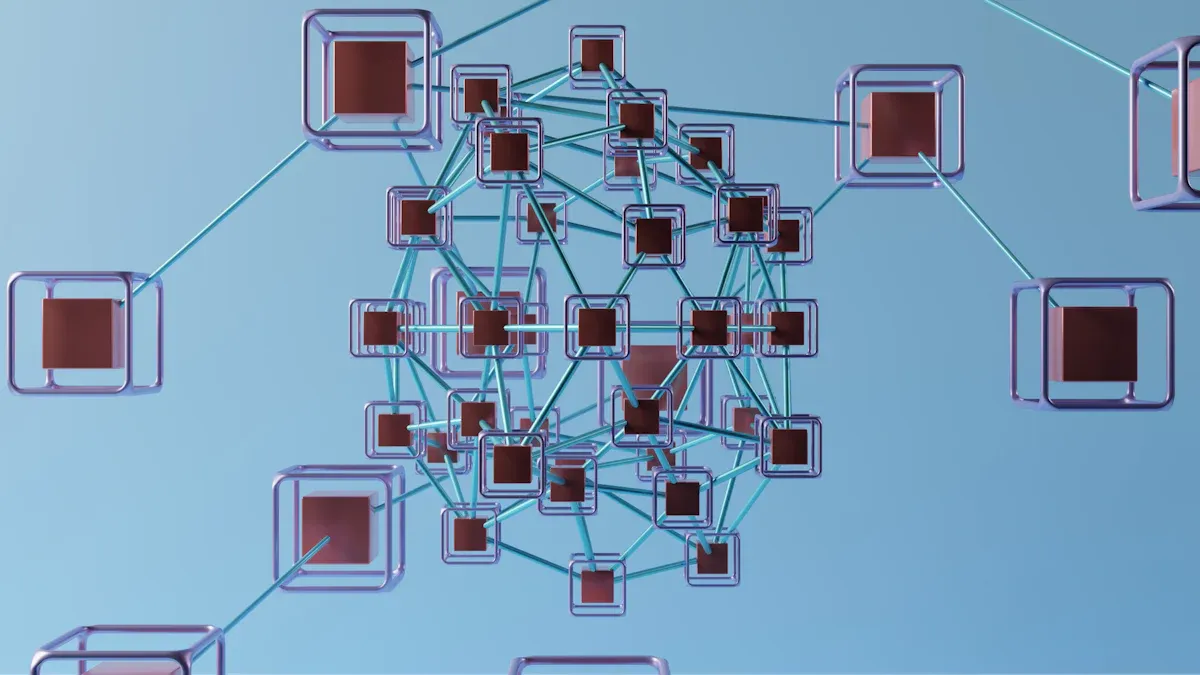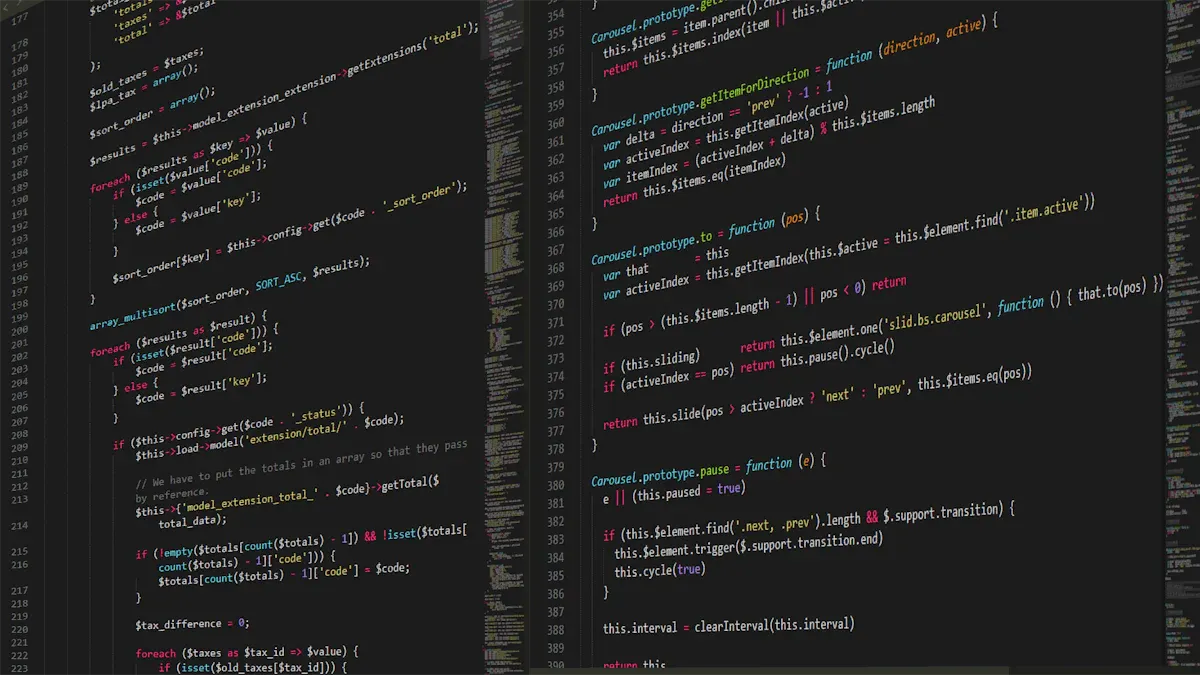ER Diagram in DBMS vs EER Diagram Key Differences and Practical Uses

You need to choose between an er diagram in dbms and an EER diagram based on the complexity of your database. EER diagrams capture advanced relationships and business rules, creating more precise models for complex domains. Industry research shows that EER diagrams improve database design by supporting richer semantics and logical mapping. Modern tools like Chat2DB use AI to make creating, editing, and visualizing both er diagram and EER diagram models faster and easier for any database project.
Key Takeaways
ER diagrams help you map simple database structures by showing entities, attributes, and relationships clearly.
EER diagrams add advanced features like inheritance and subclasses to model complex data and business rules.
Choose ER diagrams for small or early-stage projects and EER diagrams for large or complex databases.
Using tools like Chat2DB makes creating and managing ER and EER diagrams faster and easier with AI support.
Clear and updated diagrams improve communication, reduce errors, and help your database grow smoothly.
ER Diagram in DBMS
What is an ER Diagram?
When you design a database, you often start with an er diagram in dbms. An entity-relationship diagram gives you a visual way to map out the structure of your data. You use this tool to show entities, their attributes, and the relationships between them. Entities represent real-world objects or concepts, such as "Student" or "Course," and you draw them as rectangles. Relationships, shown as diamonds, connect these entities and describe how they interact. Attributes, which describe properties of entities, appear as ellipses. The er diagram in dbms helps you build a logical view of your database before you create tables or write code. This approach, known as the entity-relationship model, has become a standard for conceptual database design.
Tip: Use a conceptual er diagram early in your project to clarify requirements and avoid costly mistakes later.
Main Features of ER Diagrams
You will find several core components in er diagrams that make them powerful for database modeling:
Entities: Rectangles represent objects or things that store information. You can use single rectangles for strong entities and double rectangles for weak entities.
Relationships: Diamonds show how entities interact. You may see double diamonds for weak relationships.
Attributes: Ellipses describe properties of entities. You can use single ellipses for simple attributes, double ellipses for multivalued attributes, and dashed ellipses for derived attributes.
Connecting Lines: Solid lines link entities, relationships, and attributes.
Cardinality and Ordinality: These symbols define how many instances of one entity relate to another, such as one-to-one or one-to-many.
The er diagram in dbms allows you to express the logical schema of your database clearly. You can use different notations, such as Crow’s Foot or Chen, to suit your modeling style.
Limitations of ER Diagrams
While er diagrams offer a strong foundation, you may encounter some challenges as your database grows more complex:
The entity-relationship diagram focuses on entities and attributes, which can lead to confusion when an attribute should actually be an entity.
The entity-relationship model sometimes struggles to represent advanced relationships and all cardinalities, limiting its use for complex data models.
You may find it difficult to enforce business rules or data integrity because er diagrams do not support data manipulation commands.
Modifying or scaling an er diagram in dbms can require significant rework, especially when your requirements change.
Relying on user understanding can result in inaccurate models if you do not fully grasp the domain.
For large or evolving systems, you might need more advanced modeling tools to capture every detail and maintain data consistency.
EER Diagrams Overview
What is an EER Diagram?
When you need to capture complex requirements in your database, you turn to an enhanced entity-relationship diagram. EER diagrams build on the basic ER diagram by introducing advanced modeling features. You use them to represent not only entities and relationships but also more sophisticated structures like subclasses, superclasses, and inheritance. This approach allows you to create a more accurate and flexible data model that mirrors real-world scenarios.
EER diagrams help you visualize how entities relate at multiple levels, making them essential for modern data modeling in large or evolving systems.
Key Features of EER Diagrams
EER diagrams offer several features that set them apart from traditional ER diagrams:
You can define subclasses and superclasses, organizing entities into hierarchies.
EER diagrams support inheritance, so subclasses automatically receive attributes and relationships from their superclasses.
You can use specialization and generalization to show IS-A relationships, grouping entities into broader or more specific categories.
Categories (also called union types) let you model entities that belong to multiple unrelated superclasses.
EER diagrams allow you to set constraints, such as whether subclasses overlap or must cover all superclass instances.
These features give you the flexibility to design a database that accurately reflects complex business rules and relationships.
Advanced Modeling in EER Diagrams
With EER diagrams, you gain powerful tools for advanced data modeling. You can represent subtypes and supertypes, allowing entities to inherit properties and relationships. Specialization and generalization let you organize entities into logical hierarchies, making your model easier to understand and maintain. You can also use category types to show that an entity belongs to more than one superclass, which is useful in scenarios like employees who can also be contractors or consultants.
EER diagrams support constraints such as disjointness, which controls whether an entity can belong to multiple subclasses, and completeness, which determines if every superclass entity must be part of a subclass. Subtype discriminators help you identify which subclass an entity instance belongs to, adding clarity to your database structure.
By using EER diagrams, you ensure your database can handle complex relationships and business logic, making your data model robust and future-proof.
ER Diagrams vs EER Diagrams
Feature Comparison
When you compare er diagrams and eer diagrams, you notice several important differences in their features. Er diagrams give you a straightforward way to map out entities, attributes, and relationships in your database. You use them to create a clear picture of how different parts of your data connect. Eer diagrams, on the other hand, introduce advanced features that help you capture more complex requirements.
Here is a table that highlights the main features of each diagram type:
Feature | ER Diagrams | EER Diagrams |
|---|---|---|
Basic Entities & Relationships | ✔️ | ✔️ |
Attributes | ✔️ | ✔️ |
Subclasses & Superclasses | ✔️ | |
Inheritance | ✔️ | |
Specialization/Generalization | ✔️ | |
Categories (Union Types) | ✔️ | |
Aggregation | ✔️ | |
Advanced Constraints | ✔️ |
Note: Eer diagrams build on the foundation of er diagrams by adding features that let you model real-world scenarios with greater detail.
Modeling Capabilities
You use er diagrams when you want to represent the basic structure of your database. They focus on entities, their attributes, and the relationships between them. This approach works well for simple systems where you do not need to capture complex business rules.
Eer diagrams take your modeling to the next level. Database experts point out several ways that eer diagrams extend the capabilities of er diagrams:
You can define inheritance, allowing subclasses to receive attributes and relationships from superclasses.
Specialization and generalization let you group entities into broader or more specific categories, making your model more flexible.
Superclasses and subclasses help you organize entities in a hierarchy, such as an Employee superclass with Secretary, Technician, and Engineer subclasses.
Categories or union types allow you to model entities that belong to multiple unrelated superclasses.
Aggregation lets you combine entities and relationships into a single higher-level entity, which simplifies complex models.
Eer diagrams provide a more detailed and precise representation of complex databases.
You can handle increased data complexity and plan your database more thoroughly with these advanced features.
When you need to design a database that mirrors real-world complexity, eer diagrams give you the tools to do so. You can capture nuanced relationships and ensure your database design supports future growth.
Complexity Differences
You should consider the complexity of your project when choosing between er diagrams and eer diagrams. Er diagrams work best for smaller or less complicated databases. They help you visualize the core structure without overwhelming you with details. You can quickly map out entities and relationships, making them ideal for early-stage planning or simple applications.
Eer diagrams shine when your database design requires advanced modeling. You might work with systems that involve inheritance, multiple levels of categorization, or overlapping roles. Eer diagrams let you represent these scenarios clearly. You can manage complex relationships and constraints, which helps you avoid errors as your system grows.
If your project involves evolving requirements or intricate business rules, you will benefit from the advanced capabilities of eer diagrams. For straightforward systems, er diagrams keep your design process efficient and easy to understand.
Use Cases for ER Diagram and EER Diagram
When to Use ER Diagrams
You often rely on ER diagrams when you need to design or analyze a database at the conceptual level. These diagrams help you visualize entities, relationships, and attributes before you create the actual database. In industry and academia, you see ER diagrams used in a variety of scenarios. The table below summarizes common use cases:
Use Case Category | Description |
|---|---|
Database Design | ER diagrams help you capture and document system requirements during the initial design phase. |
System Analysis | You use them to analyze data flow and create conceptual blueprints for system architecture. |
Production Support | They assist you in improving database performance, debugging errors, and redesigning architecture. |
Business Process Optimization | ER diagrams allow you to identify redundancies and bottlenecks, streamlining business processes. |
Academic Learning | In classrooms, students use ER diagrams to learn database design, query formulation, and schema mapping. |
ER diagrams play a key role in academic settings. You can use them to overcome challenges in understanding database schemas. Visualization through ER diagrams improves your ability to formulate correct queries and strengthens your skills in database analysis and development.
When to Use EER Diagrams
You choose EER diagrams when your project demands advanced modeling features. These diagrams excel in situations where you need to represent complex relationships, such as hierarchies or inheritance. You often encounter EER diagrams in the following use cases:
Complex relational database projects that require detailed semantic modeling, especially those involving superclasses and subclasses.
Software engineering projects where you need to design information systems from the ground up.
Business information systems that support and analyze intricate business processes.
Research databases that must capture detailed hierarchical relationships.
Educational projects focused on structured data design and advanced modeling techniques.
You benefit from EER diagrams when you need to capture every nuance of your data model. For examples, consider a university system with students, faculty, and staff, each with unique and shared attributes. EER diagrams help you organize these relationships clearly, ensuring your database supports future growth and complexity.
Practical Scenarios with Chat2DB

Example: ER Diagram for Simple Database
You often start database development with an ER diagram to map out the core structure. For example, in a school management system, you define entities such as Student, Teacher, and Class. Each entity has attributes like Student ID, Name, and Grade. Relationships connect these entities, such as a Student "enrolled in" a Class or a Teacher "teaches" a Class. This logical structure ensures you capture all necessary data and relationships. Many industries, including AI development, rely on ER diagrams as foundational blueprints. You follow a stepwise process: define requirements, create the ER diagram, develop the schema, assign data types, implement the schema, populate data, test, and maintain the database. Chat2DB streamlines this process with its intuitive interface and AI-driven automation, making it easy to design and refine your diagrams.
Example: EER Diagram for Complex Database
When your project involves more advanced requirements, you turn to eer diagrams. Consider an e-commerce platform where you need to model customers, employees, and vendors, each with unique and shared attributes. EER diagrams allow you to define superclasses and subclasses, supporting inheritance and specialization. For instance, you can create a superclass "User" with subclasses "Customer" and "Vendor." You can also set constraints and model overlapping roles. Chat2DB provides clear visualizations for these complex structures. Its graphical user interface and AI-powered tools help you manage and explore intricate relationships. You can use natural language to interact with your schema, making it easier to handle advanced modeling tasks.
Chat2DB Features for Diagram Modeling
Chat2DB offers a modern approach to diagram modeling. You benefit from advanced AI capabilities, including natural language processing, which simplifies the creation and editing of both ER and eer diagrams. The drag-and-drop interface makes it accessible for users without deep technical skills. Chat2DB supports real-time collaboration, allowing multiple users to work on the same project. Security features, such as encryption and two-factor authentication, protect your data during modeling. The platform integrates with a wide range of database systems, ensuring flexibility for any project. You can generate SQL code automatically from your diagrams, reducing errors and saving time. Chat2DB also provides robust visualization tools, including BI dashboards and auto-generated charts, to help you analyze and present your data effectively.
Choosing the Right Diagram
Decision Factors
Selecting the best diagram for your project depends on several important factors. You should consider the size and complexity of your data before you start designing databases. For smaller or simpler datasets, ER diagrams provide a clear visual outlook of entities, attributes, and relationships. These diagrams work well when you need a straightforward overview or when your system does not require advanced features.
When your project involves larger or more complex data, EER diagrams become essential. They offer enhanced detail, including inheritance, specialization, and aggregation. EER diagrams help you organize relationships more precisely and eliminate redundancies. If your requirements include modeling hierarchies or advanced business rules, you will benefit from the extra capabilities of EER diagrams.
Tip: Always match the diagram type to your project’s needs. Simpler projects benefit from ER diagrams, while complex systems require the advanced features of EER diagrams.
You should also remember that both diagram types are most effective for structured, relational data. For unstructured or non-relational data, other modeling approaches may be more suitable.
Tips for Effective Modeling
To achieve success in database design, you need to follow best practices throughout the modeling process:
Begin with simple requirements and basic entities. Build a foundation before adding complexity.
Gradually introduce details, such as relationships and constraints, as your understanding grows.
Validate your design early by prototyping with SQL or using tools that offer hints and validations.
Maintain your diagrams over time. Keeping them updated saves effort when you revisit or extend your project.
Use user-friendly tools that support auto refinement, traceability, and integration with other workflows.
Common mistakes can hinder your progress. Avoid confusing one-to-many and many-to-many relationships. Do not use specific instances as entities. Make sure to distinguish between attributes and entities, and separate complex attributes into their own entities when needed.
Note: Clear communication with stakeholders is crucial. Simple factual statements often help business users validate your model more easily than complex diagrams.
You now understand the key differences between ER and EER diagrams.
ER diagrams give you a clear overview of your database structure and work best for simple or early-stage designs.
EER diagrams add advanced features, making them ideal for complex or large-scale databases that need detailed modeling.
Chat2DB helps you create both diagram types with AI-powered tools, real-time collaboration, and seamless integration. You can boost efficiency and accuracy in any database project by choosing the right diagram and platform.
FAQ
What is the main difference between an ER diagram and an EER diagram?
You use ER diagrams for basic database structures. EER diagrams add advanced features like inheritance, specialization, and categories. EER diagrams help you model complex relationships and business rules that ER diagrams cannot represent.
Can I convert an ER diagram to an EER diagram?
Yes, you can upgrade your ER diagram to an EER diagram. You add advanced elements such as subclasses, superclasses, and constraints. This process helps you capture more detailed requirements as your project grows.
When should you choose an ER diagram over an EER diagram?
You should use an ER diagram for simple databases with straightforward relationships. ER diagrams work best during early design stages or for small projects. They help you visualize entities and relationships without overwhelming details.
How does Chat2DB help with ER and EER diagram modeling?
Chat2DB lets you create, edit, and visualize both ER and EER diagrams. You use AI-powered tools to generate diagrams from natural language. The platform supports collaboration, security, and integration with many databases, making modeling efficient and secure.
See Also
Differences Between Relational And Non-Relational Database Schemas
A Comparison Of Chat2DB And Classic SQL Tools
Essential Insights Into SQL And NoSQL Database Differences
Top Seven Artificial Intelligence Database Tools For Developers

